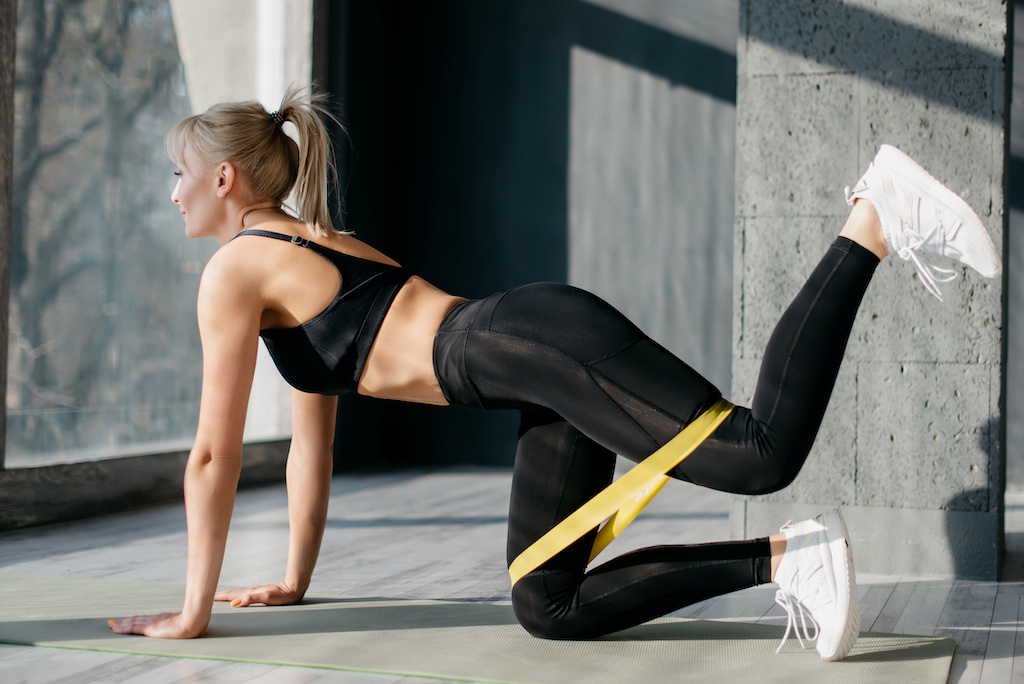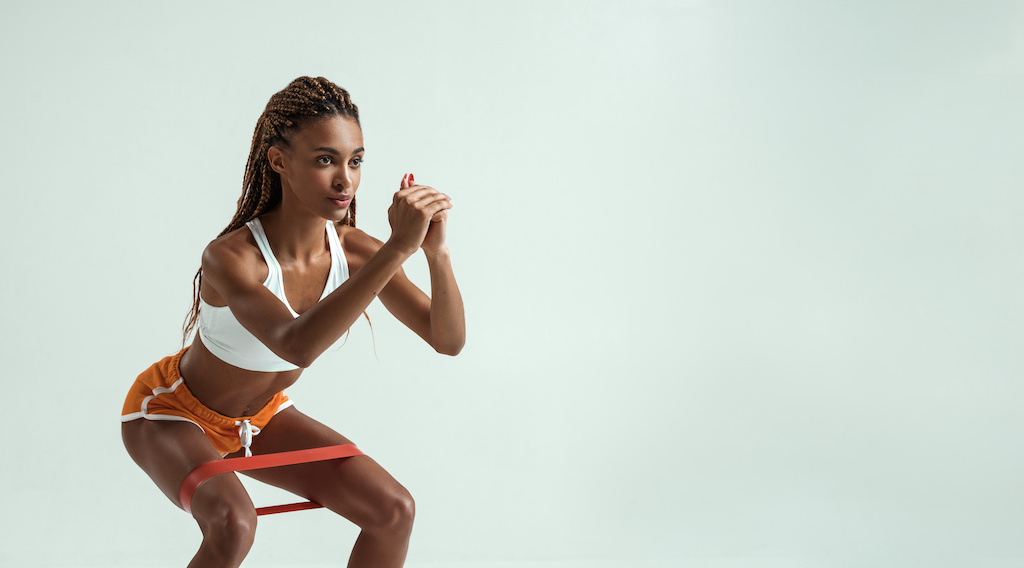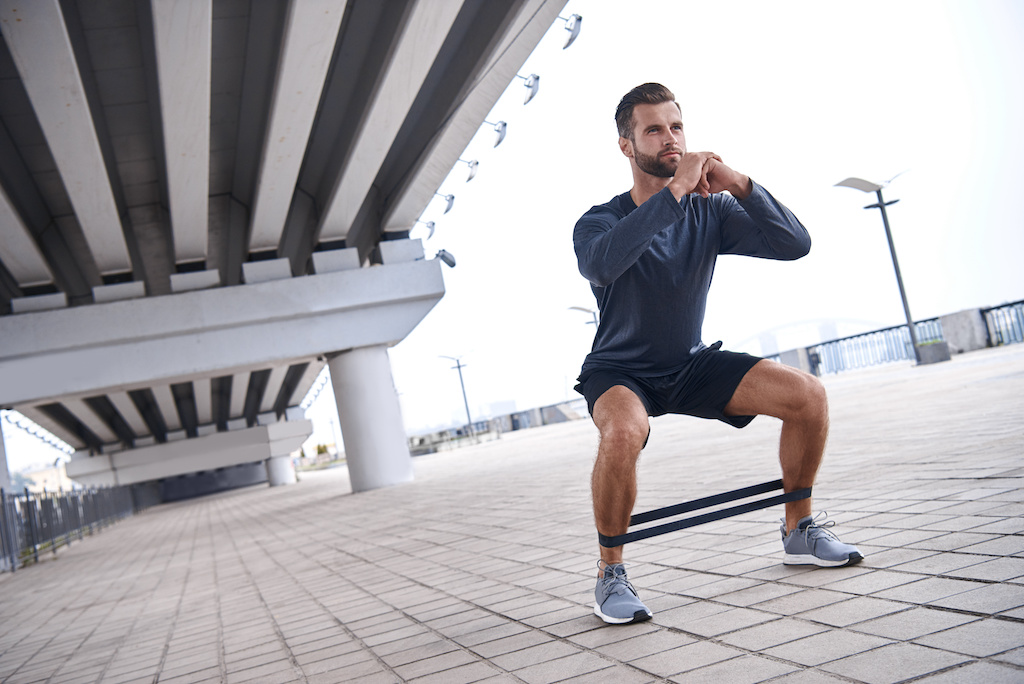Boost your gluteal and leg strength with a training program using elastic resistance bands! Find out how to choose your resistance bands and which lower body exercises lend themselves best to this training technique to create your own personalised sessions with rapid results.
Increase the Resistance of Your Movements with Elastic Bands

Space-saving and very inexpensive, elastic resistance bands can be used in any home fitness area. Using these accessories has various advantages in the context of muscle strengthening work:
- Increased strength: to perform these moves, the body has to make a greater effort, which results in the development of power. The fact that the bands are elastic, unlike fixed elements, such as dumbbells or bars, is useful. You can easily adjust the difficulty of the movements by shortening or stretching the band as needed.
- Increased mobility: improve your flexibility and joint mobility with the use of resistance bands.
- Muscle development: whatever muscle group you are targeting, for focused or general work, training with resistance bands increases the benefits tenfold. These accessories also make it possible to mobilise muscles that are rarely used.
- They can also be used in other ways, for example, to support the body weight during pulling exercises.
Elastic bands are particularly recommended for targeting the thighs, calves and buttocks, as these are muscle groups that play as important a role in everyday life as in sports. Strengthening them will improve your performance and your posture.
Which Resistance Band to Choose and How to Use this Accessory

Elastic bands are all the same length, but they offer a different resistance according to their width and category, indicated by a number or a colour code specific to each manufacturer. Most commonly, they are closed loops. There are also open bands with handles. If you are a beginner, start with a level 1 band, which is easier to stretch. For the legs and buttocks, which are powerful muscles, you can opt for wide bands.
Tips and Workout Ideas for Building Legs and Buttocks

Here are 3 workout ideas to build leg and buttock muscles using resistance bands:
- Donkey kick: place a (closed) resistance band around your thighs, just above your knees, and position yourself on all fours on a yoga mat. Keeping your back and head in line, push one leg back, but don’t fully extend it, keeping the resistance band in place. Push to the full range of motion for the band before returning and reversing the movement. Do several sets to build up the glutes and hamstrings, either alternating legs or doing one set per side.
- Squats with lateral foot thrust, to strengthen an often forgotten muscle; the gluteus medius: place the resistance band above your knees, perform a classic squat and thrust one foot to the side as you stand up. The effort of keeping your balance is the key to building muscle! Remember to change sides regularly.
- Monster walk: loads of fun; this exercise consists of walking with your legs apart and a resistance band stretched over your ankles. Add a second band above your knees to make the exercise more challenging.
- Leg curl: stand in front of a wall or the back of a chair to keep your balance. With a rubber band passing under your right foot and around your left ankle, bring your left heel towards your buttocks (the right foot holds the rubber band) while standing straight and looking at an imaginary point in front of you. Return to your original position. Remember to alternate the movement to work both quadriceps.
Find more workout ideas by browsing the iFit® library. For example, we recommend the Resistance Band Miniseries hosted by John Peel, especially session 4, which is dedicated to the lower body (all 7 sessions work on total body strength and resistance). To take it a step further, try the Booty & Legs series on iFit® Daily, with other targeted leg and glute exercises without equipment, accessible in 1 click from your smartphone or device of choice.
Check out our Fitness & Training page for more advice.
